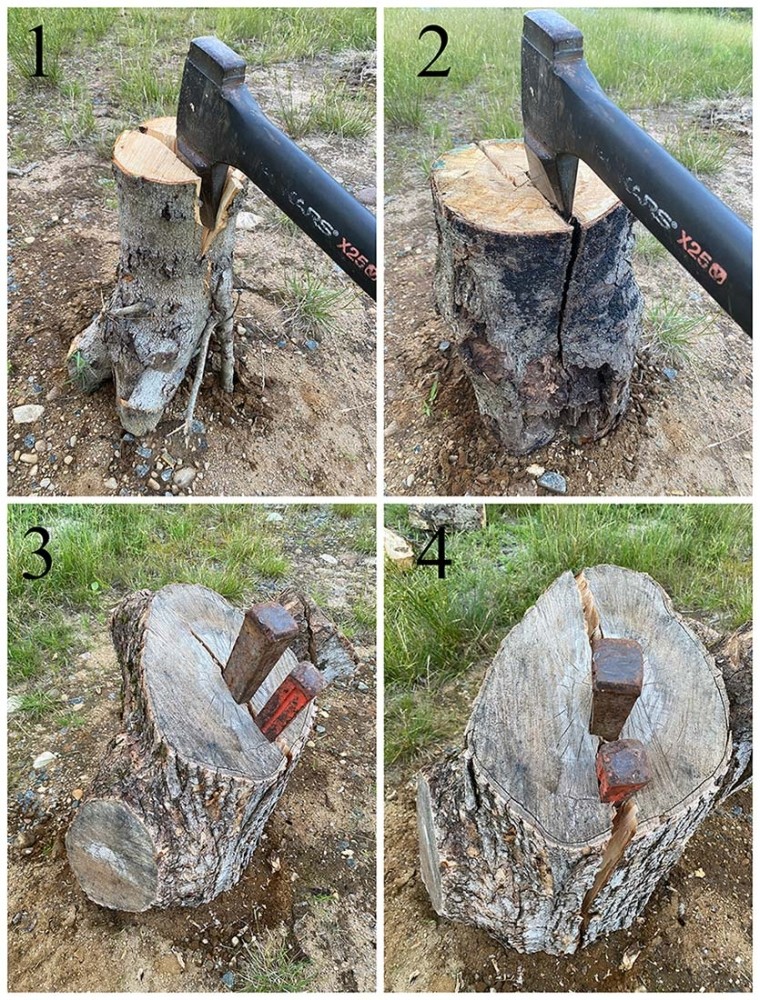Tucked behind all too many woodsheds are unsplit rounds that stand as evidence of defeat. Many of these blocks have been tossed in frustration after dozens of hits, each one eliciting increased aggravation in the form of a stuck axe or a bouncing maul. Although such episodes lead some folks to abandon their axe for a 30-ton hydraulic wood splitter, I believe that even the most problematic firewood blocks – those loaded with knots that twist the grain in every imaginable direction – can be persuaded to split with a bit of technique and finesse.
Here are my suggestions for conquering gnarly firewood.
Use proper form. For nearly two decades, I coached college students in competitive lumberjack sports, including splitting. The hardest part of that job was breaking the bad habits of farm kids who grew up round-housing sledgehammers over their shoulders. The problem with this method is that it lacks precision, and repeatability. Instead, your focus should be on hitting the same spot every time. To do this, it is essential to adopt a wide stance (wide enough that if you miss, the axe goes between, and not into, your legs) coupled with raising the axe in line with the center of your body. Also, remember that inertia is going to cause you to swing farther than you think; square up to the block and then take a half-step back. Your goal should be to hit the near edge of the block, not the center, and certainly never overstrike (unless you enjoy rehanging your axe).
Look for signs of weakness. Use those knots and twisted grains to your advantage. If the knots are toward one end of the block, rotate the log so that the knots are at the bottom. (Image 1) If you see existing checks or cracks in the block, use those as an aiming point. (Image 2)
Use wedges. For the gnarliest blocks you’re going to need a sledgehammer and a pair of wedges. Owning a few wedges is essential, because knot-filled logs often need to be “unzipped” with multiple wedges used in a line. This particularly gnarly block required two wedges to split. If the wedges had both bottomed out without the block splitting, I would have added a third wedge, and so on. (Images 3 and 4)
Be persistent. Remember that knotty wood is denser and contains more btu’s than clear wood, so there’s a payoff in the end. If you consistently struggle to penetrate the entire block with your axe or maul, you may want to consider cutting shorter rounds or splitting green wood once temperatures drop below freezing and the blocks “pop” apart.
And if all else fails? If after trying all these tips you’re still tempted to go to the dark side and use a hydraulic splitter, tune in to this column in the Winter issue, where we’ll explore the pros and cons of various hydraulic splitter setups!


